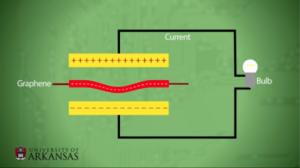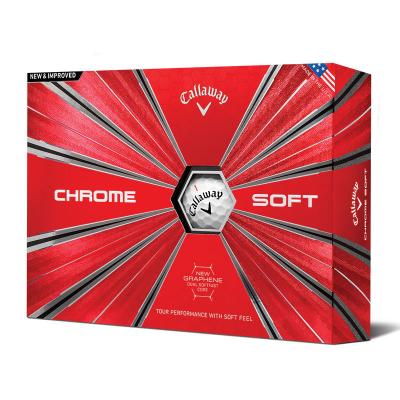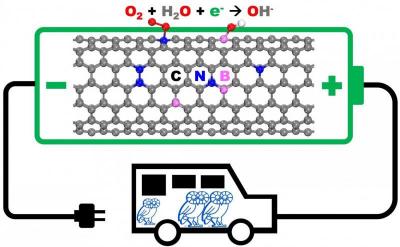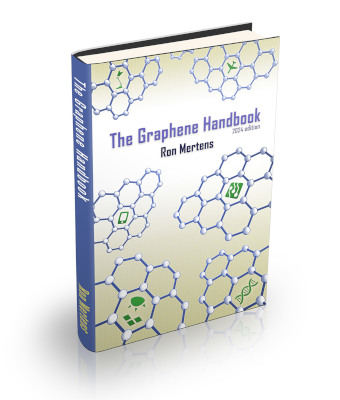The Graphene-Info newsletter, January 2018
Published: Thu, 02/01/18
New graphene-based 'atomristors' could pave the way towards more powerful computing
Researchers at The University of Texas at Austin, in collaboration with Peking University scientists, have used graphene sheets as electrodes and semiconducting atomic sheets (molybdenum sulfide) as the active layer to develop what they refer to as the thinnest memory storage device with dense memory capacity, paving the way for faster, smaller and smarter computer chips for everything from consumer electronics to big data to brain-inspired computing.
They named their creation "atomristors", and stated that before this work, it was considered impossible to make memory devices from materials that were only one atomic layer thick, The the "atomristors" improve upon memristors, an emerging memory storage technology with lower memory scalability. "Atomristors will allow for the advancement of Moore's Law at the system level by enabling the 3D integration of nanoscale memory with nanoscale transistors on the same chip for advanced computing systems," the team said.
University of Arkansas team aims to commercialize its revolutionary graphene-based VEH technology
A fascinating research out of the University of Arkansas, revealed in November 2017, showed that the internal motion of graphene (and possibly other 2D materials) may be used as a source of clean, limitless energy. Now, NTS Innovations (also known as Nanotube Solutions), a U.S -based nanotechnology company, has licensed this patent-pending technology from the university and plans to use it to fabricate devices and systems that produce energy without consuming fuel or creating pollution.
NTS Innovations sees great potential for this discovery in many applications. For example, it could be used to create sustainable, decentralized energy systems throughout the world, especially in places where the energy grid system is underdeveloped or nonexistent. It may also prove beneficial in biomedical devices, enhanced solar and wind production, capturing waste heat and remote sensing devices. The current plan is to produce a proof of concept — a device capable of charging a capacitor using only ambient heat and the motion of graphene — within a year.
New graphene-enhanced products on the market!
Callaway Golf Company, U.S-based maker of golf equipment, unveiled new graphene-enhanced golf balls called Callaway Chrome Soft golf and Chrome Soft X golf balls. Shipping is supposed to be starting in February 2018, for about $45/dozen. Graphene has reportedly allowed designers to push the limits of compression between the inner and outer core. A soft inner core is made to deform under large impact, and suppresses spin for maximum distance. On shorter shots, the firm graphene outer core helps the ball hold its shape, allowing for maximum spin and control.
A graphene-based contact enhancer is now on the market, complementing the trendy graphene-enhanced audio equipment sector. A new-Zealand based company called Mad Scientist Audio is selling its Graphene Contact Enhancer (GCE) that can be used on any metal-to-metal contacts, such as RCA plugs and sockets, loudspeaker leads, fuses, and so on, promising to 'fill in the gaps' and give a profound improvement in system performance when applied to the important contacts in a system (e.g interconnects, speaker leads, power cords, fuses, tube pins, etc).
Another graphene-enhanced audio product is Ghostek’s new graphene-based headphones, the Rapture Wireless Headphones. Ghostek says that the Rapture uses 40 mm graphene drivers to deliver a "Next-Level HD Audio Experience". Other features include Bluetooth 4.1+EDR, aptX Audio Technology, soft protein leather ear cups, a 3.5mm audio jack input, built-in HD microphone and a LED battery status. Ghostek's Rapture Wireless Headphones are now shipping for $125.
Cecorelax launched a pillow made from memory-foam enhanced with graphene particles, called the "Graphene Memory Foam Pillow". Cecorelax says that the pillow helps maintain body temperature during the night, and is highly resistant, light and flexible. The Cecorelax graphene memory foam pillow is now shipping in the UK, with prices ranging from £26 to £49 (depending on the pillow size).
Wuxi Graphene Film, a wholly-owned subsidiary of The Sixth Elements Materials, has launched a new graphene-enhanced product in the Chinese market: The GF1 Graphene Watch. It is a smart health watch, with CVD graphene film acting as the conductive element for the touch screen (as a replacement for the usually-used ITO). The graphene-enhanced watch is already shipping in China through JD, and sells for ¥489, which are around $75 USD.
Graphene-based cell-sized robots are on their way!
Researchers from Cornell have developed tiny graphene-enhanced robot exoskeletons that can rapidly change shape upon sensing chemical or thermal changes in its environment. The team claims that these microscale machines – equipped with electronic, photonic and chemical payloads – could become a powerful platform for robotics at the size scale of biological microorganisms.
The machines move using a motor called a bimorph. A bimorph is an assembly of two materials – in this case, graphene and glass – that bends when driven by a stimulus like heat, a chemical reaction or an applied voltage. The shape change happens because, in the case of heat, two materials with different thermal responses expand by different amounts over the same temperature change. As a result, the bimorph bends to relieve some of this strain, allowing one layer to stretch out longer than the other. By adding rigid flat panels that cannot be bent by bimorphs, the researchers localize bending to take place only in specific places, creating folds. With this concept, they are able to make a variety of folding structures ranging from tetrahedra (triangular pyramids) to cubes.
Graphene to potentially replace platinum for cheaper fuel cells
Researchers from Rice University have discovered that nitrogen-doped carbon nanotubes or modified graphene nanoribbons could potentially replace platinum, one of the most expensive facets in fuel cells, for performing fast oxygen reduction—a crucial reaction that transforms chemical energy into electricity.
The researchers used computer simulations to see how carbon nanomaterials can be improved for fuel-cell cathodes and discovered the atom-level mechanisms by which doped nanomaterials catalyze oxygen reduction reactions. The simulations also revealed why graphene nanoribbons and carbon nanotubes modified with nitrogen and/or boron are so sluggish and how they can be improved.
Graphene-Info launches The Graphene Handbook, 2018 edition
Don’t miss the fifth edition of Graphene-Info's very own Graphene Handbook, the most comprehensive resource on graphene technology, industry and market - now updated for 2018. Get your copy now to stay current on graphene research, development and market!
Reading this book, you'll learn all about graphene’s properties, different production methods, possible graphene applications, the latest graphene research and much more!
Graphene-Info's Batteries, Supercapacitors, GO, Lighting, Displays and Graphene Investments Market Reports updated to January 2018
The new versions of all our graphene market reports are now available! Graphene-Info provides comprehensive graphene market reports focused on specific topics and aspects, and cover everything you need to know about these niche markets. The reports are now updated to January 2018.
Our reports include The Graphene Batteries Market Report, The Graphene Supercapacitors Market Report, The Graphene Supercapacitors Market Report, The Graphene for the Display and Lighting Industries and The Graphene Investment Guide. The reports come with one year of free upgrades. In case you purchased a report within the year, contact us to get your new edition. Older customers are entitled to an upgrade discount, contact us for more information.
Iowa State University researchers have created a new, low-cost, easily produced, graphene-based sensors-on-tape that can be attached to plants to provide data that was previously very hard to collect.
Researchers at Iowa State University, along with collaborators at Rice University, Ames Laboratory and Lehigh University, have designed a new graphene printing technology that can produce electronic circuits that are low-cost, flexible, highly conductive and water repellent.
Researchers at The University of Manchester have found a new and exciting physical effect in graphene – membranes that could be used in devices to artificially mimic photosynthesis.
New research by WMG at the University of Warwick has shown a novel approach to replacing graphite in the anodes of lithium-ion batteries using silicon, by reinforcing the anode’s structure with graphene girders.
Researchers from Cornell University and Honeywell Aerospace have designed a graphene-enhanced transient electronics technology in which the microchip self-destructs by vaporizing – an action that can be remotely triggered – without releasing harmful byproducts.
Spain-based graphene producer Graphenea has launched a new Chinese edition of its web site to specifically target the growing Chinese graphene market.
Researchers at the University of Sussex have developed a sensor, shaped like a flexible rubber tube and filled with a solution of water, oil and particles graphene, that has the potential to prevent sudden infant death syndrome (SIDS) cases.
Researchers from the Pierre Aigrain Laboratory in the ENS Physics department in Paris, France, have discovered a new cooling mechanism for electronic components made of graphene deposited on boron nitride.
Diving deeper into Nanotech’s controversial claims of developing a graphene solar panel that reaches 92% efficiency.
Graphene-Info lists 2017's top 10 graphene applications, ranked by the number of posts written about them.
Do you have a friend or a colleague that might be interested in Graphene technology? Forward this mail to update him on the world of Graphene.
If you received this email from a friend, subscribe to this newsletter here!












